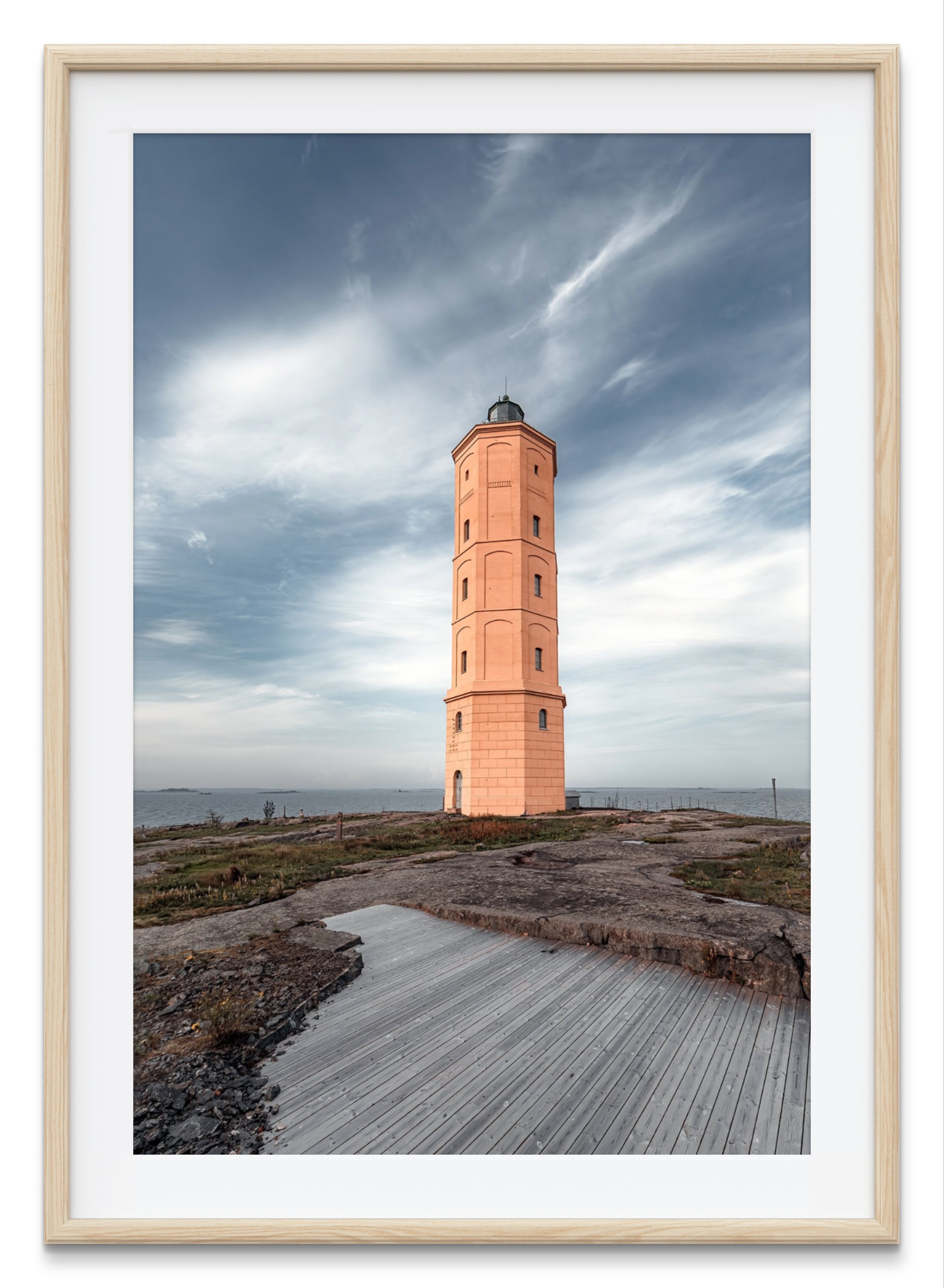Söderskär
The octagonal and six-story lighthouse of Söderskär was completed in 1862 on the island of Mattlandet in the outer Archipelago of Sipoo. The preliminary drawings were made by Albert Edelfelt (the painter's father), and the final plans were created by architect Ernst Lohrmann. The lower part of the structure is made of gray stone up to a height of 8 meters. However, the availability of this stone ran out, and the upper part had to be continued with brick. The structure proved to be too flimsy. The lighthouse swayed and bent. Between 1912 and 1917, it was reinforced with iron bands, rail tracks and concrete. This gave the lighthouse a sturdy corset. During the war, Söderskär was an important air surveillance site. From there, it was possible to give air alerts to the mainland via a telephone cable laid along the seabed to Suomenlinna.
The octagonal and six-story lighthouse of Söderskär was completed in 1862 on the island of Mattlandet in the outer Archipelago of Sipoo. The preliminary drawings were made by Albert Edelfelt (the painter's father), and the final plans were created by architect Ernst Lohrmann. The lower part of the structure is made of gray stone up to a height of 8 meters. However, the availability of this stone ran out, and the upper part had to be continued with brick. The structure proved to be too flimsy. The lighthouse swayed and bent. Between 1912 and 1917, it was reinforced with iron bands, rail tracks and concrete. This gave the lighthouse a sturdy corset. During the war, Söderskär was an important air surveillance site. From there, it was possible to give air alerts to the mainland via a telephone cable laid along the seabed to Suomenlinna.
The octagonal and six-story lighthouse of Söderskär was completed in 1862 on the island of Mattlandet in the outer Archipelago of Sipoo. The preliminary drawings were made by Albert Edelfelt (the painter's father), and the final plans were created by architect Ernst Lohrmann. The lower part of the structure is made of gray stone up to a height of 8 meters. However, the availability of this stone ran out, and the upper part had to be continued with brick. The structure proved to be too flimsy. The lighthouse swayed and bent. Between 1912 and 1917, it was reinforced with iron bands, rail tracks and concrete. This gave the lighthouse a sturdy corset. During the war, Söderskär was an important air surveillance site. From there, it was possible to give air alerts to the mainland via a telephone cable laid along the seabed to Suomenlinna.




